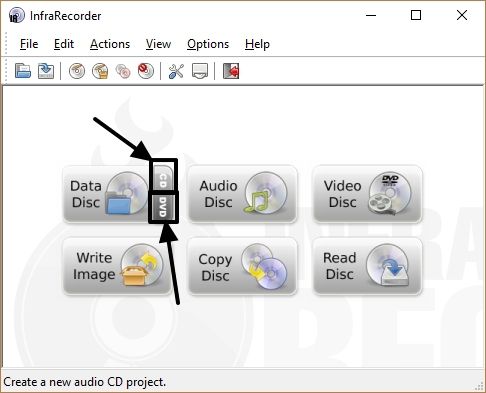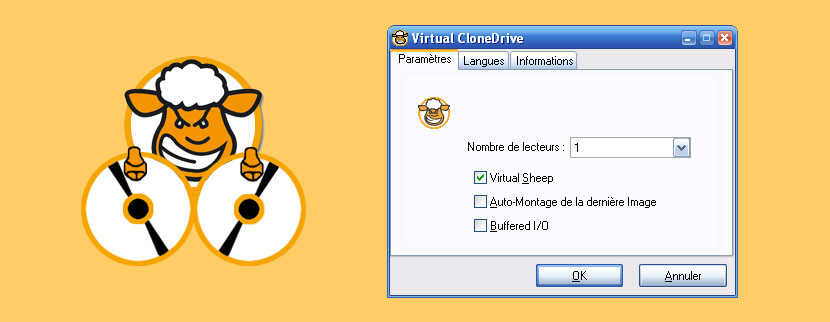
Create An Cd Windows 10 And Click
In the Create a Windows To Go workspace window, choose the certified USB drive onto which you want to install Windows 10 and click Next. Click Windows button and go to Control Panel > Windows To Go. Mount the ISO file and connect a certified USB drive to your Windows 10 computer.
Create An Cd Free Is A
It lets you create ISO files from files or folders you select. Files are generally stored within the Multiboot folder, making for a nicely organized Portable Multiboot USB Drive that can still be used for traditional storage purposes.Jihosoft ISO Maker Free is a free and easy to use ISO maker software for Windows. Which were amongst the first tools made for the purpose of creating a USB bootable flash drive. X installation disk or.YUMI is the recommended successor to our Universal USB Installer and older MultiBoot ISOs tools. Zu Windows 10 vor dem Download unserer Software.
Step 2: Open File Explorer (Windows Explorer) and navigate to the folder where Windows 10 ISO image file is located. Step 1: Insert a blank DVD into the optical drive (CD/DVD drive) of your PC. Make ISO from CDRom: User can use this tool to make own ISO(CD Image file).In this method, we will use the native ISO burning tool to prepare a bootable Windows 10 DVD. YUMI Multiboot Bootable USB Flash Drive CreationFile Extract/Convert To ISO on Windows & macOS, CD/DVD/Blu-ray disk to ISO. If you find a distribution where the installer does not work, please let me know. It gives the report after completing the job in HTML format.Though YUMI was originally intended to be used to store and run various “LIVE Linux” Operating Systems and tools from USB, using it to install Linux from a Flash Drive to a Hard Drive should work with most distributions.
Here are the key differences: In the interim, Legacy or UEFI variants are recommended. Can be traced back to 10 years ago that this tool supports early Windows XP.NOTE: A YUMI exFAT variant is still in the works. Distributions can also be uninstalled using the same tool!Attach the GParted Live CD ISO to vm and boot with that Right click on the. This tool works much like Universal USB Installer, except it can be used to run more than one distribution from your Thumb Drive.
Most modern motherboards still have Legacy BIOS firmware support though CMS Legacy mode. YUMI Legacy (BIOS USB Boot Only)You can use this version if your computer supports BIOS booting, and if you do not plan to run your Windows installers from YUMI in UEFI mode. BIOS and UEFI USB booting (Distro dependent). YUMI UEFI supports Fat32 only.
Note that this UEFI version is not compatible with the legacy variant. YUMI Legacy Download and Changelog:SYUMI-2.0.9.1.exe: Fixed a bug where distributions were not being removed from the boot menu when using the remove installed distros option.YUMI SHA-256: ECCA38AB2FF99618CFF15843AD0E80EC034481D9C890AE86940ECC07DF759F78The YUMI UEFI variant utilizes GRUB2 for both UEFI and BIOS booting. When choosing the “Wipe Entire Disk” option, all partitions sharing that disk number will be wiped clean.

Here’s a list of recommended Fast Flash Drives. Ensure that you have made a backup of any information you want to keep before using YUMI on any drive.Basic Essentials to create a Multi System Bootable USB DriveRecommended: You’ll have the best experience when using YUMI on a Fast SSD Flash Drive. YUMI UEFI currently must use Fat32 format.YUMI Legacy or UEFI can be used to format your select USB drive, but be aware that all partitions on the select disk will also be deleted.
Create An Cd Update YUMI To
Allow previously selected disk number to persist on subsequent installs.05/04/21 Version 0.0.3.9: Allow running from earlier I.E Windows 7 versions. Did you select a drive?” after uninstalling a distribution and then proceeding to install another. Additionally, developers who wish to have their Live Linux distribution added, can direct me to a copy to try.08/28/21 Version 0.0.4.1: Updated to support newer Archbang and Archlinux.08/22/21 Version 0.0.4.0: Fixed error “YUMI will not attempt to install on (disk 0). YUMI (to create a Multiboot Bootable USB).Please inform me of unlisted “FREE” Live Linux distributions or version revisions, and I will attempt to update YUMI to support them. Windows 11, 10, 8, 7 Operating Environment.
Also removed some distros that are no longer in development. Devices listed as local (fixed) disks are not displayed.03/19/21 Version 0.0.3.5: Updated to support memtest 86+ 5.3.1. Also set to show USB Drives (removable media) only. Also added support for LinuxCNC.04/16/21 Version 0.0.3.6: Fixed broken System Rescue option. Added a checkpoint to prevent YUMI from starting if the operating environment is not at least Windows 8.04/21/21 Version 0.0.3.7: Fixed Windows 10 Installer to work with newer Windows 10 ISOs with an Install.wim larger than 4GB. Added secondary confirmation message before proceeding to Wipe and Format a drive.
Implemented a checkpoint to prevent YUMI from running if not at least Windows 8.04/19/21 Version 2.0.8.6: Updated to support Linux CNC. Include an additional confirmation prompt before proceeding to Wipe and or Format. Moved checkpoint to prevent NTFS format and Wipe options from displaying if OS is not at least Windows 8.04/19/21 Version 2.0.8.7: Set to show Local Drives in addition to USB Drives. Legacy YUMI Changelog09/29/21 Version 2.0.9.1: Bug Fixed – distributions were not being removed from the boot menu after using the remove installed distros option.08/04/21 Version 2.0.9.0: Updated to extract and run AmogOS with persistence from a directory.07/23/21 Version 2.0.8.9: Updated to support AmogOS.05/04/21 Version 2.0.8.8: Allow running from earlier I.E Windows 7 versions. Also added additional drive checkpoints. Switched to use diskpart to wipe and create a single partition, then use fat32 format.01/11/21 Version 0.0.3.3: Updated to use Grub2 MBR instead of chain loading from Syslinux.

Type d (to delete the existing partition) Type fdisk /dev/sd x (replacing x with your actual usb device) Type fdisk -l (and note which device is your USB Drive) Format your USB Flash Drive to use a Single Partition: If all went well, then you should be booting your favorite distributions from your custom Multi-Boot USB device!Creating a MultiBoot Bootable USB Flash Drive (Linux)The following instructions were performed from an Ubuntu host environment.NOTE: The following method is currently broken and will be updated at a later point.I. Then, boot and enjoy!That’s really all there is to it.
Create a Fat32 Filesystem on the USB Flash Drive: Type w (to write the changes and close fdisk)II. Type 1 (to mark the first partition active “bootable”) Press Enter again (to use the default value as the last cylinder)
Once WINE is installed, launch YUMI as you normally would by simply clicking the YUMI-2.0.9.1.exeYUMI ( Your Universal Multiboot Installer) enables each user to create their own custom Multiboot UFD containing only the distributions they want. To install WINE from within an Ubuntu operating environment, first open a terminal and type sudo apt install wine, then press enter. Remove and reinsert your USB flash drive, or remount it Type mkfs.vfat -F 32 -n MULTIBOOT /dev/sd x1 (to format the partition as fat32)
A new distribution can also be added to the Bootable USB each time the tool is run.If you run YUMI from the same location you store ISO files, then they should be auto detected (*See Known Issues Below), eliminating the need to browse for each ISO.Other Notes: If MultibootISOs was previously used, you must reformat the drive, and start over.


 0 kommentar(er)
0 kommentar(er)
